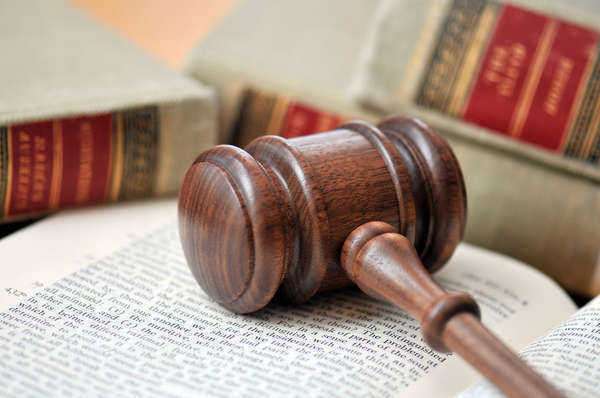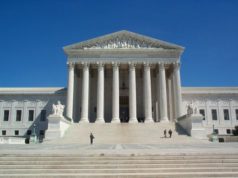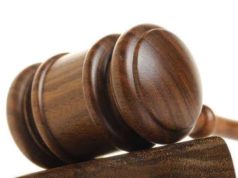
The Supreme Court of the United States is one of the three branches of the federal government, alongside the legislative and executive branches. It is the highest court in the federal system, responsible for interpreting the Constitution and reviewing the constitutionality of laws and government actions. Over the years, the Supreme Court has played a significant role in shaping legislative policy, sometimes by striking down laws as unconstitutional and at other times by upholding them. In this article, we will explore the Supreme Court’s role in legislative policy and the impact it has had on American society.
The Supreme Court has the power of judicial review, which gives it the authority to declare acts of Congress unconstitutional. This power was established in the landmark case of Marbury v. Madison in 1803, in which Chief Justice John Marshall wrote that “It is emphatically the province and duty of the Judicial Department to say what the law is.” Since then, the Court has used its power of judicial review to strike down laws that it deems unconstitutional. This power has been controversial throughout American history, with some arguing that it gives the Court too much power over the legislative branch.
One of the most famous examples of the Supreme Court striking down legislative policy was the case of Brown v. Board of Education in 1954. In that case, the Court ruled that segregation in public schools was unconstitutional, overturning the “separate but equal” doctrine established in Plessy v. Ferguson in 1896. The Brown decision had a significant impact on American society, leading to the desegregation of schools and other public spaces. It also paved the way for civil rights legislation and other efforts to address discrimination against African Americans.
Another important example of the Supreme Court’s involvement in legislative policy is Roe v. Wade, the 1973 case that legalized abortion nationwide. In that case, the Court ruled that a Texas law that criminalized abortion violated a woman’s right to privacy. The decision was controversial then and remains so today, with some arguing that it was an example of the Court imposing its own political views on the country.
The Court has also played a role in upholding legislative policy, although perhaps not as dramatically as in the cases mentioned above. For example, in the 2010 case of National Federation of Independent Business v. Sebelius, the Court upheld the majority of the Affordable Care Act (ACA or Obamacare). The decision was controversial at the time, with some arguing that the ACA was an overreach of federal power, while others argued that it was necessary to expand access to healthcare. Regardless of one’s opinions on the law itself, the Court’s decision helped solidify the ACA as a major piece of legislative policy.
In addition to judicial review, the Supreme Court can also shape legislative policy through its interpretation of the Constitution. Many important issues that Congress addresses are not specifically mentioned in the Constitution, so the Court must interpret the document in order to determine whether a particular law or action is constitutional. This can be a contentious process, as different justices may have different interpretations of the Constitution.
For example, in the 2008 case of District of Columbia v. Heller, the Court ruled that the Second Amendment protects an individual’s right to own a firearm for personal use. The decision was controversial, with some arguing that the Second Amendment only applies to the right to bear arms in the context of a well-regulated militia. The Heller decision has had significant implications for legislative policy related to gun rights and gun control.
Similarly, in the 2015 case of Obergefell v. Hodges, the Court ruled that same-sex couples have a constitutional right to marry. The decision legalized same-sex marriage nationwide and had a significant impact on legislative policy related to LGBTQ rights and discrimination.
The Court’s role in legislative policy is not limited to the federal government. The Court can also review state laws and actions, and in doing so, it can shape state-level legislative policy. For example, in the 2013 case of Shelby County v. Holder, the Court struck down a provision of the Voting Rights Act that required certain states with a history of voter discrimination to obtain federal approval before making changes to their voting laws. The decision had a significant impact on state-level legislative policy related to voting rights and voter suppression.
The Supreme Court’s role in legislative policy is not without its critics. Some argue that the Court has too much power over the legislative branch and that its decisions can be undemocratic, as justices are not elected and do not necessarily reflect the views of the majority of Americans. Others argue that the Court’s interpretation of the Constitution can be too rigid and that it fails to account for changes in society and the needs of modern Americans.
Regardless of one’s opinions on the Court’s role in legislative policy, it is clear that it plays a significant role in shaping American society. From landmark cases like Brown v. Board of Education and Roe v. Wade to more recent decisions like Heller and Obergefell, the Supreme Court has had a lasting impact on legislative policy and the rights of Americans. As we continue to grapple with issues related to civil rights, voting rights, healthcare, and more, the Court’s role in shaping legislative policy will remain a crucial aspect of American democracy.
As the basis for setting forth legislative policy, Congress exists to ensure that laws be placed into circulation. In relation to judicial review, such actions may impose influence upon legislative policy. Two distinct ways include that the Court possesses the authority to supersede the decisions of agencies of power, as well as the fact that the slightest hint of judicial review may lead to a modification in a Federal or State’s decision in terms of policy. Legislative policy may actually employ judicial review in order to lead to preferred outcomes.
In reference to actual legislative policy, the legislative branch has the authority to enact laws, increase taxes, and include new budgets, as well as other financial considerations. Legislature is comprised of multiple Houses in which bills are deliberated. One House of the Legislature is termed “unicameral” while two entails a “bicameral.” In most cases, power attached to the employment of legislative policy is most often attached to the Lower House, yet usually equal each other when referencing governments run with presidents at the head.
Seats refer to the number of members that compose the respective legislative Houses. At the very start of the process of the creation of legislative policy, a proposal is prepared for introduction to Congress. It may be exhibited as a “bill, joint resolution, concurrent resolution, or a simple resolution”.
The difference between bills and joint resolutions is that joint resolutions have the potential for the inclusion of preambles while bills do not. In general, joint resolutions are used for the purposes of setting forth Amendments to the Constitution, as well as for the declaration of war. Concurrent resolutions and simple resolutions, however, do not impose any part of the law. Alternatively, they function to voice the conceptions of Congress.
Lobbyists are the individuals who compose legislation and place it forth for introduction, those of which are also required by law to be present within a central database system. Despite the fact that bills may be introduced by various House members, the Constitution also sets forth specific qualifications. It states that if a bill is to increase the revenue or profits of Government, it must be set forth by members within the House of Representatives. Due to this, the Senate does not possess the authority to put forward bills that will, in effect, institute taxation.
Along the way, a bill must pass through multiple stages, which each contain committees which will present opinions for decision. Following its passage through these areas of interest, legislative policy will finally be presented to the President for final consideration.


























